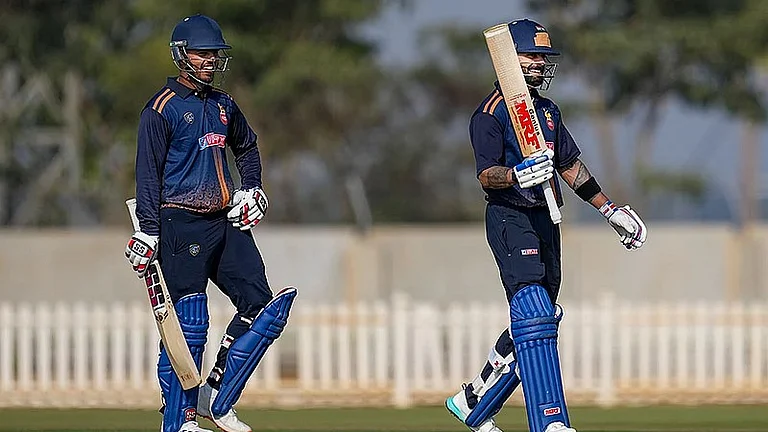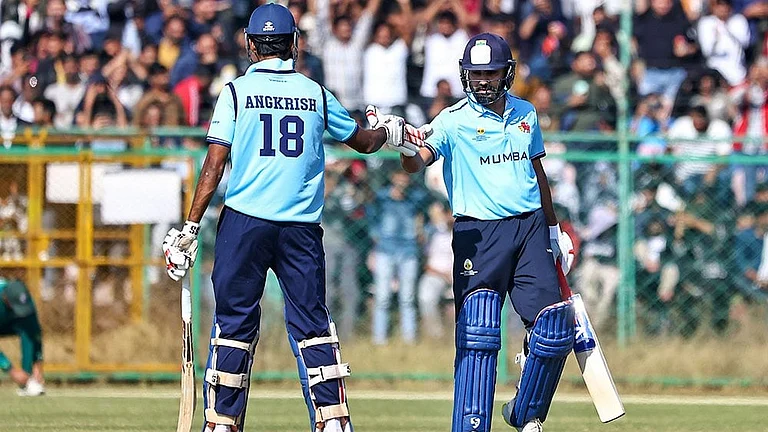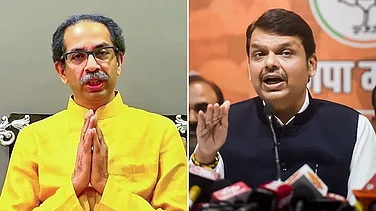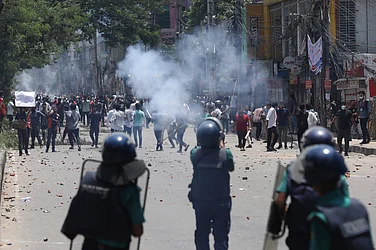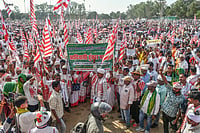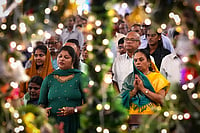Phulmani Oraon has been working as a labourer in areas around Ranchi. After her husband’s demise, she has been forced to move out of her village to look after her four children. Hailing from Karra block of Khunti district, adjacent to Jharkhand’s capital, 39-year-old Phulmani is forced to live in a rented house in Ranchi to make ends meet.
There is a discrepancy in the wage that Phulmani receives for her labour. She told Outlook, “I work in the construction sector. I receive Rs 400 as daily wages. However, male labourers get paid between 500 and 600 for the same work. We do not speak to the contractor in this regard for fear of losing our work. Once we had asked the contractor regarding being paid less. He informed us that we are labourers and men work as masons. We work more than men folk, yet this wage difference exists.”
In Jharkhand, male labourers working in the construction sector are called porters and women are called labourers. The porters are placed one category above labourers and above them are masons.
41-year-old Phulmati Devi, a resident of Palkot in Gumla district, also complains about the same problem. However, she has always been vocal about this discrimination. She said, “We slog more than porters. We carry sand and bricks on our heads. Sand and bricks are added and they (men) make mixture (by mixing cement and sand) by using spade. We carry the material of the mixture. Sometimes, we make this mixture too. We put in much more labour than porters. Yet it is said that a porter is a porter and a labourer is a labourer. I make sure to raise my voice against this discrimination wherever I work. I ask for the same wage.”
Phulmati comes from Gumla district and has been staying at Ranchi working as a labourer. Her husband too works as a labourer. He has the responsibility of taking care of his two children along with paying the rent of the house. Like them, lakhs of women labourers in Jharkhand also face discrimination in receiving just wages.
Labourers working in the construction sector are placed in the category of unorganised sector workers. According to All India Central Council of Trade Union (AICCTU) Jharkhand, in the unorganised sector, 40 per cent of workers are women labourers. In whatever field these women work, they are paid less than their male counterparts.
Bhubaneswar Kewat, Jharkhand Secretary, AICCTU, said, “There are more than 15 lakh labourers in the construction sector. There are many labour associations that have fixed Rs 600 as the minimum age for labourers. It is rare that they get this amount. Mostly they get paid Rs 500 for their labour while women receive only Rs 400. Due to the scarcity of work, women are unable to raise their voices against this discriminatory practice. They feel that if they speak against this, they will stop getting work.”
According to the number of registered labourers in the Jharkhand government's e-Shram portal, there are around 1 crore 11 lakh labourers who are engaged in different kinds of work. These are those labourers whose PF is neither deducted nor do they get a fixed monthly amount as wages. For decades, these labourers were not even registered in the eyes of the government. In the last few years, the Jharkhand government has started the process of registering them on the e-Shram portal.
Out of the registered unorganised sector workers, 55.5 lakh are engaged in the agriculture sector. All India Progressive Women's Association (AIPWA) says that women receive half the amount of wage in agriculture as that received by men. Gita Mandal, secretary, AIPWA Jharkhand, says, “Women do the same work that men do at the time of paddy plantation. However, women get paid only half of what men receive. For paddy cultivation men are paid Rs 350 per day while women labourers get Rs 200 or Rs 175. People still feel that women live in their houses. They do not come out of their houses that often. They feel that women can be given anything. They want women to work for free.”
According to Gita Mandal, her organization has been campaigning against this discrimination. They want equal pay for equal work. There should be no discrimination on the basis of gender.
More women work at the Ranchi petrol pump than men. According to the people of the trade union, the policy of the owners of petrol pumps is to make women work for less money. But Ashok Singh, Jharkhand Petroleum Dealers Association, says the city's petrol pumps are the safest place for women to work. That is the reason why they work here. Ashok also denies that women are paid less than men. He says that both men and women get the same wages.
Anita, 22, Sunita, 23, and Priti, 20 (name changed), work at three different petrol pump stations in the capital city of Ranchi. There are 22 more girls working at the petrol pump where Anita works. There are only 10 men working there. Anita gets Rs 7,000 as a monthly wage. She says that men do not get paid less than Rs 10,000 a month. Barring some, everyone gets more than Rs 12,000, while the salary of any woman working here is not even Rs 10,000.”
There are 8 women and one man working at the petrol pump where Sunita works. She says that nobody at the petrol pump receives more than Rs 8,000 as salary. She says that many times she has asked for a salary hike for everyone. However, it has not been increased. Priti says that there are more than 20 female workers and 8 male workers at the petrol pump. She receives Rs 7,000 and none of the female workers get paid more than Rs 8,000. Men get Rs 10,000, Rs 12000, and even Rs 15,000 as salary. She informs that the starting salary for women is Rs 6,000 at the petrol pump.
According to the association, there are more than 50 petrol pumps in the city. Every petrol pump has 60 to 70 per cent women workers on average. Ashok Singh says that there are more than 1,600 petrol pumps in Jharkhand. Anita, Sunita and Preeti’s versions also raise question marks on the association's claim of equal pay.
The Jharkhand government has increased the minimum wage of the labourers from Rs 329.68 per day to Rs 400.86 per day. This accumulates to Rs 12,000 per month as wage. This means that women working at petrol pumps are not even receiving the minimum wage.
However, MNREGA labourers do not face this kind of discrimination. Both men and women labourers receive the same kind of wage under MNREGA. According to a report, the number of active labourers in Jharkhand is 33.04 lakhs and the wage per day is Rs 255. Swati Narayan says that there is a difference between men and women under MNREGA, which needs to be understood.
Swati Narayan, associated with the Right to Food campaign, says, “Here the wages are equal for both, but so low that it is a kind of discrimination. Under MNREGA, women constitute 50 per cent of workers across India. However, under MNREGA, women constitute 90 per cent workforce in Kerala and Tamil Nadu in the South. In a way, MGNREGA has been womanised. Women are more in this sector. In most states, MGNREGA wages are less than the minimum wage fixed by the state governments. The Supreme Court has ordered that they cannot pay less than the minimum wage, under a government scheme. Governments are not committed to improving this scheme and are not increasing wages because it employs more women than men. Government also feels that women will accept whatever amount they are offered as wage, without any protest. If there were more men in it, the government would definitely concentrate on increasing MGNREGA wages.”
(Translated by Kaveri Mishra)








